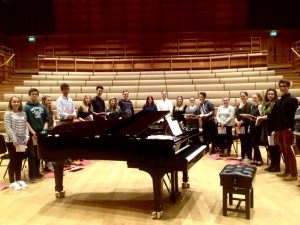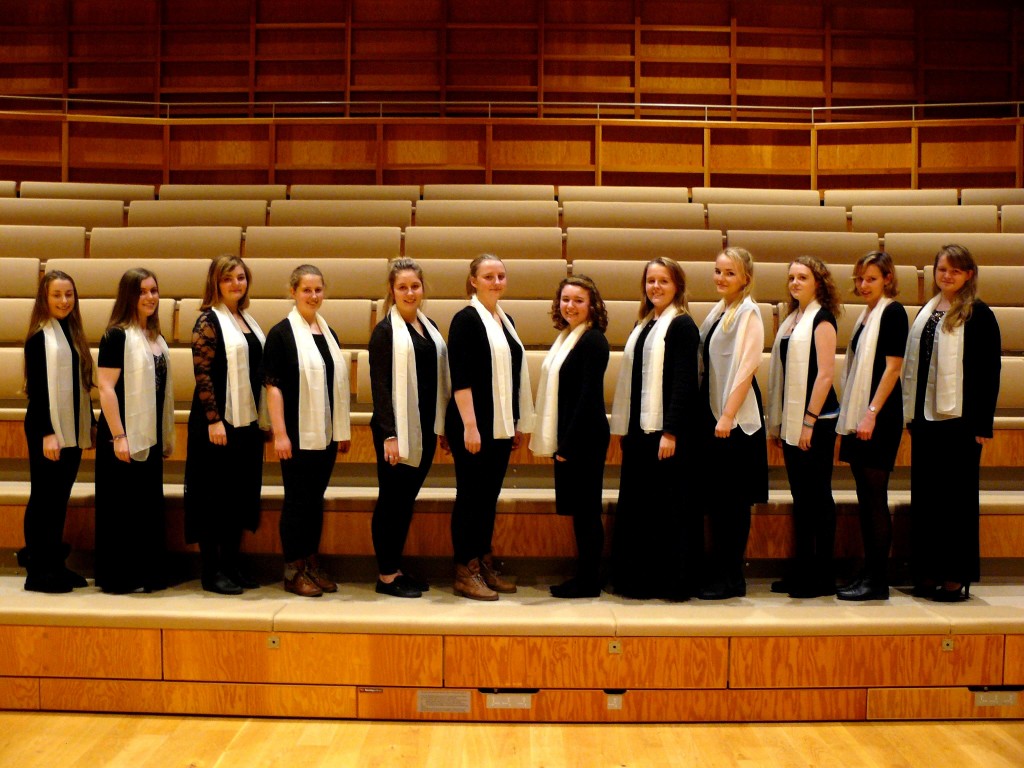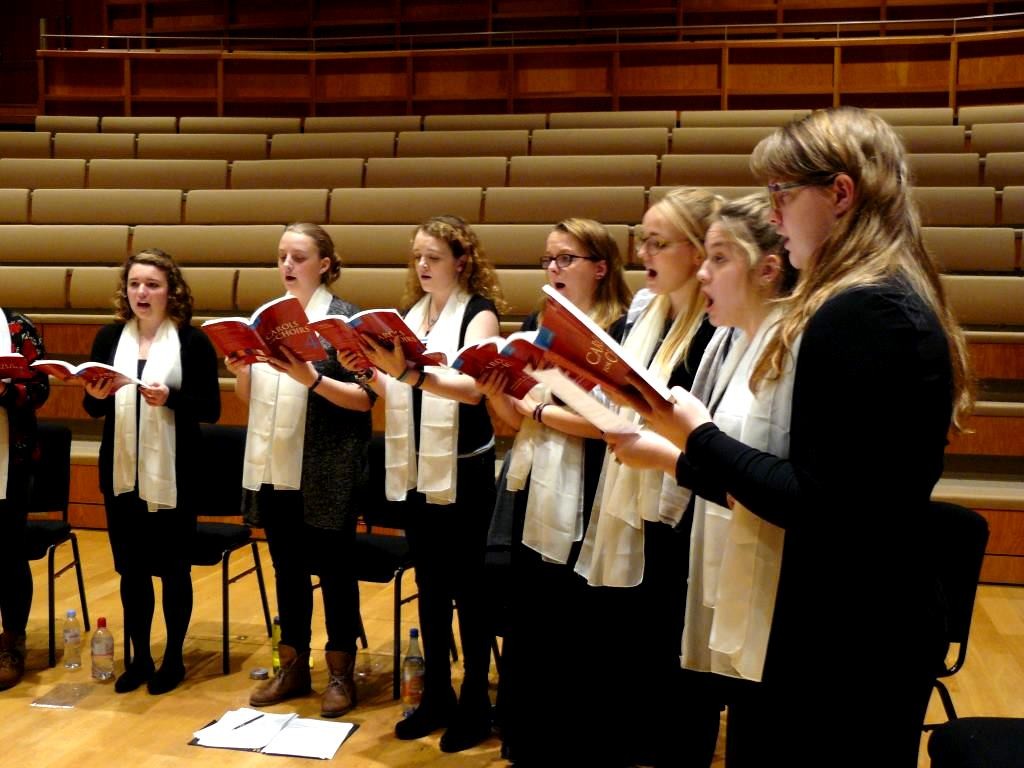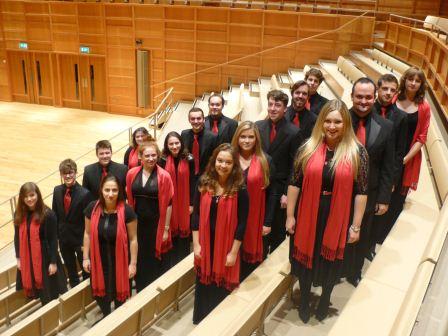So, the dust of two days of auditions has settled, and the University Chamber Choir is now two weeks in to its rehearsal schedule.
 Starting with a new choir is always a nerve-wracking experience for a conductor: establishing protocols early on, showing the Choir how they will be expected to learn in rehearsals, working to bring the group together as a unit – all with people whom you don’t necessarily know, or who don’t know one another. You want to make sure that they feel they are achieving quickly, in order that they feel motivated – especially when you want them all to come back the second week!
Starting with a new choir is always a nerve-wracking experience for a conductor: establishing protocols early on, showing the Choir how they will be expected to learn in rehearsals, working to bring the group together as a unit – all with people whom you don’t necessarily know, or who don’t know one another. You want to make sure that they feel they are achieving quickly, in order that they feel motivated – especially when you want them all to come back the second week!
I’m relieved to say they all returned last night, and am particularly excited by the fact that we have already sung off-piano and in mixed formation (the latter always an ambition but not necessarily articulated in early rehearsals, when singers are ensconced in the safety of singing in voice-parts), in a contemporary carol by Alexander Campkin, Sleep, Holy Babe, the title piece from an exciting new anthology of contemporary seasonal choral works published by Shorter House. The choir has taken to the carol with considerable alacrity, and so it was thrilling to step away from the piano and direct the piece a cappella so early on. The piece has a richly colourful tonal palette that will work well in the Cathedral in December.
Second-year Doug Haycock, this year’s assistant conductor, introduced Hassler’s sprightly Cantate Domino in last night’s session, guiding the choir through the metric change into the dancing triple-metre central section.
Still in Christmas mode (a chorister’s Christmas always begins well in advance of anyone else’s, although this year apparently we’ve been outdone by a certain large supermarket chain…), we also started looking at the utterly lovely Lullaby My Jesus, a choral arrangement by Andrew Carter of the slow movement of Peter Warlock’s Capriol Suite for strings. This ravishingly beautiful publication from Banks Music immediately appealed to the Choir, and we moved through the first verse slowly, relishing each chord – it’s a piece that also makes you wish you were a tenor, for its arcing, aching line which unfolds part-way through the verse. We ended with an exploration of the darker harmonies of the ‘Agnus Dei’ in Fauré’s Requiem, which we’re preparing for performance in the Cathedral Crypt in early March, marvelling all the while at the dextrous ease with which Fauré induces harmonic motion of such concentrated power, yet so effortlessly done that it’s easy to miss its dramatic impact.
 It’s early days, of course, and we are still finding our feet, experimenting with different formations to find a suitable balance, and gradually working on singing more confidently to bring out the Choir’s particular sound; but it’s an exciting time, being a part of the start of the gradual unfolding of the group into what potentially will be a very exciting ensemble.
It’s early days, of course, and we are still finding our feet, experimenting with different formations to find a suitable balance, and gradually working on singing more confidently to bring out the Choir’s particular sound; but it’s an exciting time, being a part of the start of the gradual unfolding of the group into what potentially will be a very exciting ensemble.


 And all the weeks of nagging – by both myself and this year’s assistant conductor, Joe – finally began to yield results last night. The ensemble sound was more confident, the choir was beginning to find its feet and start to perform, rather than simply singing through the repertoire.
And all the weeks of nagging – by both myself and this year’s assistant conductor, Joe – finally began to yield results last night. The ensemble sound was more confident, the choir was beginning to find its feet and start to perform, rather than simply singing through the repertoire. The other aspect to last night’s rehearsal was a first try-out of the choir’s concert outfits, to see if the colour and co-ordinating will work. This year, we’ve gone for the simple but stark contrast of black and cream, and last night we sang for most of the session in concert-dress; and it does make a difference. Not only do you need to sound like a choir, you need to feel like one; to stand and deliver in a manner that tells the audience that you know what you are doing, and that wins the listener’s trust even before you have sung a note. Standing like a choir last night also helped them sing like one too.
The other aspect to last night’s rehearsal was a first try-out of the choir’s concert outfits, to see if the colour and co-ordinating will work. This year, we’ve gone for the simple but stark contrast of black and cream, and last night we sang for most of the session in concert-dress; and it does make a difference. Not only do you need to sound like a choir, you need to feel like one; to stand and deliver in a manner that tells the audience that you know what you are doing, and that wins the listener’s trust even before you have sung a note. Standing like a choir last night also helped them sing like one too.
